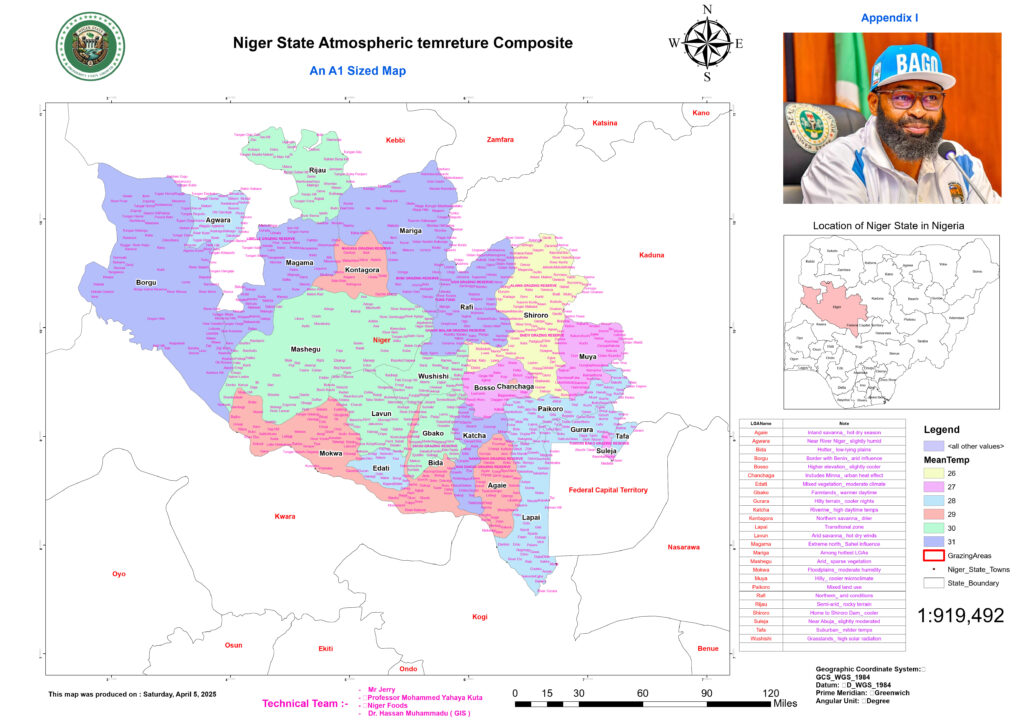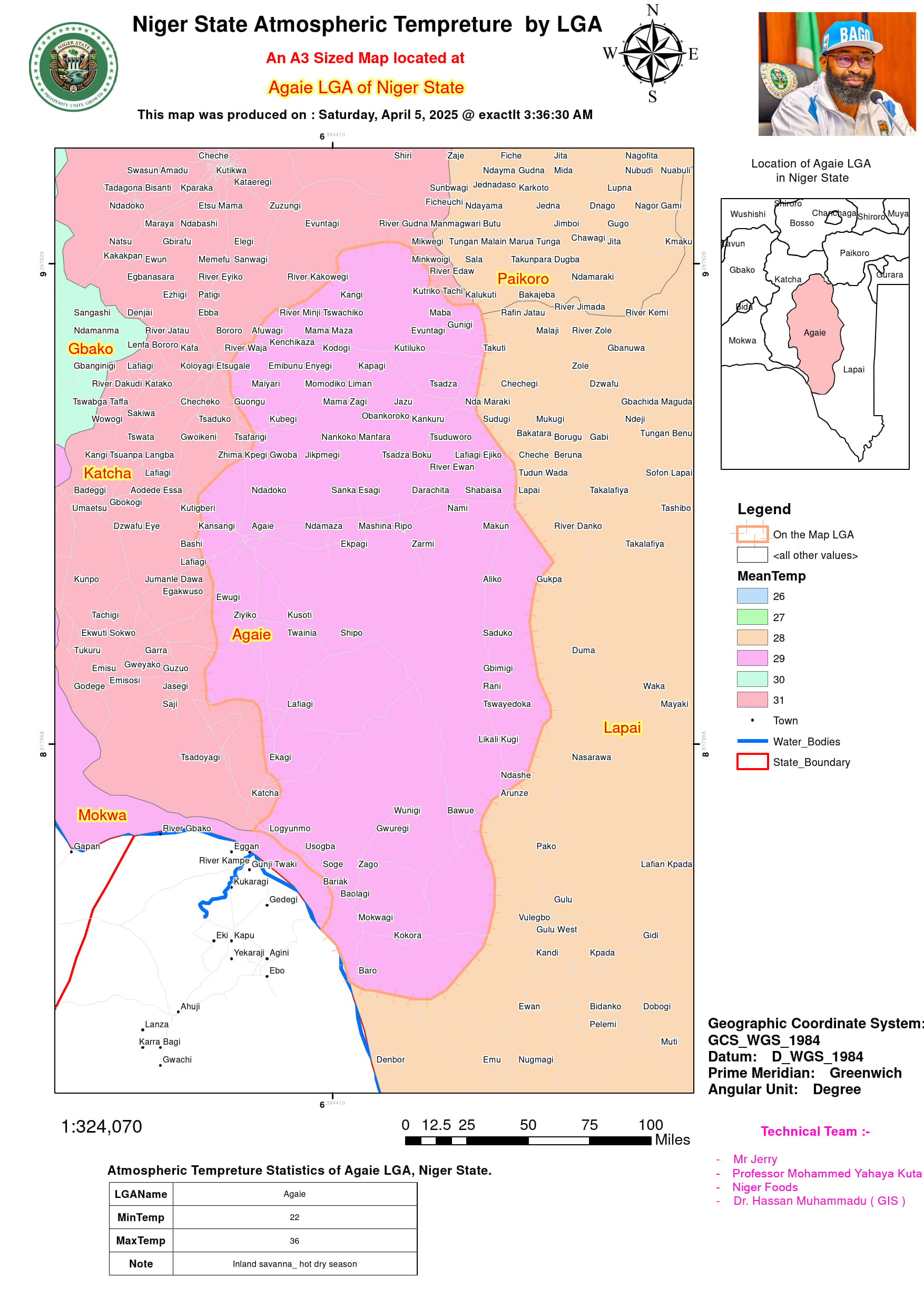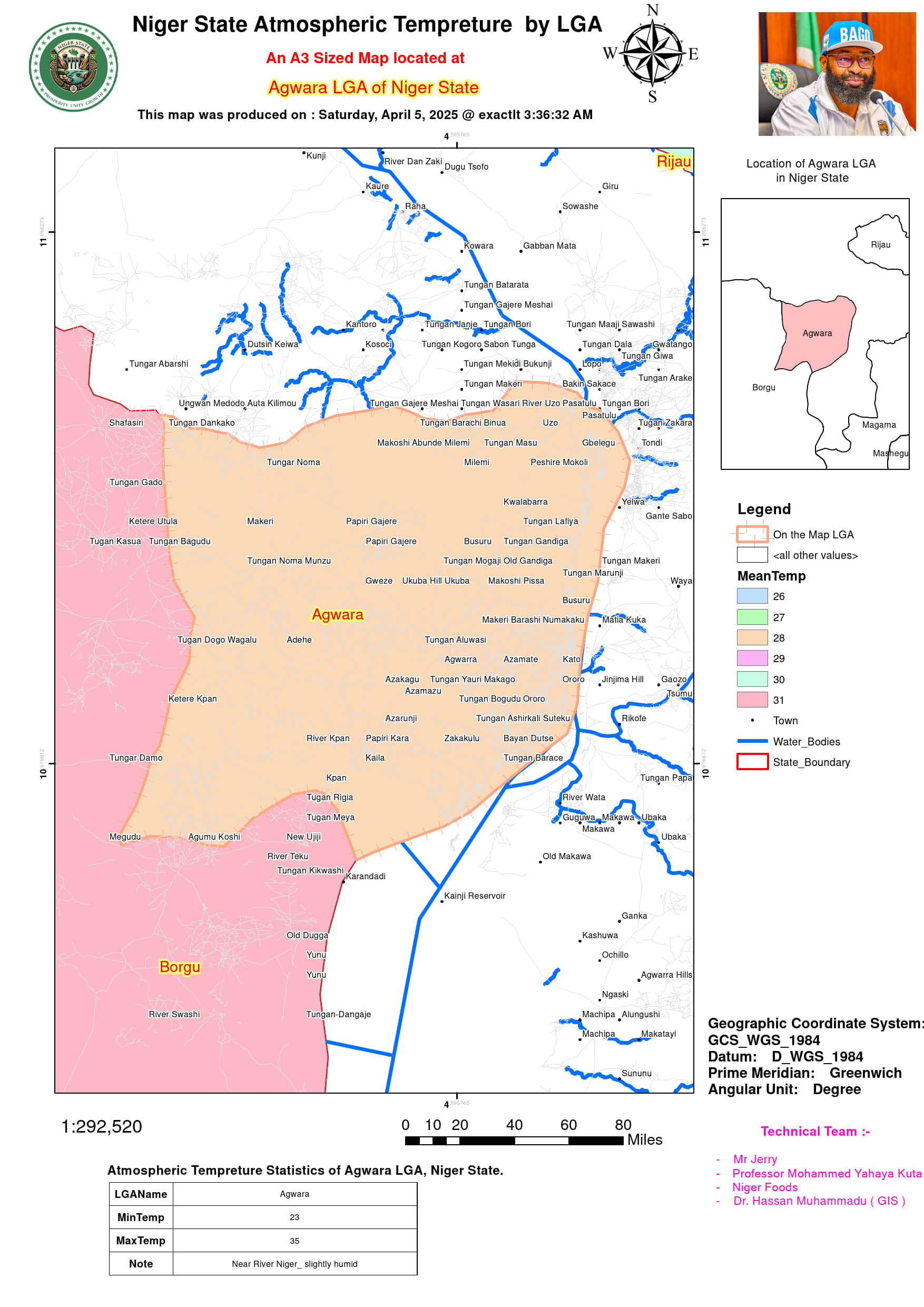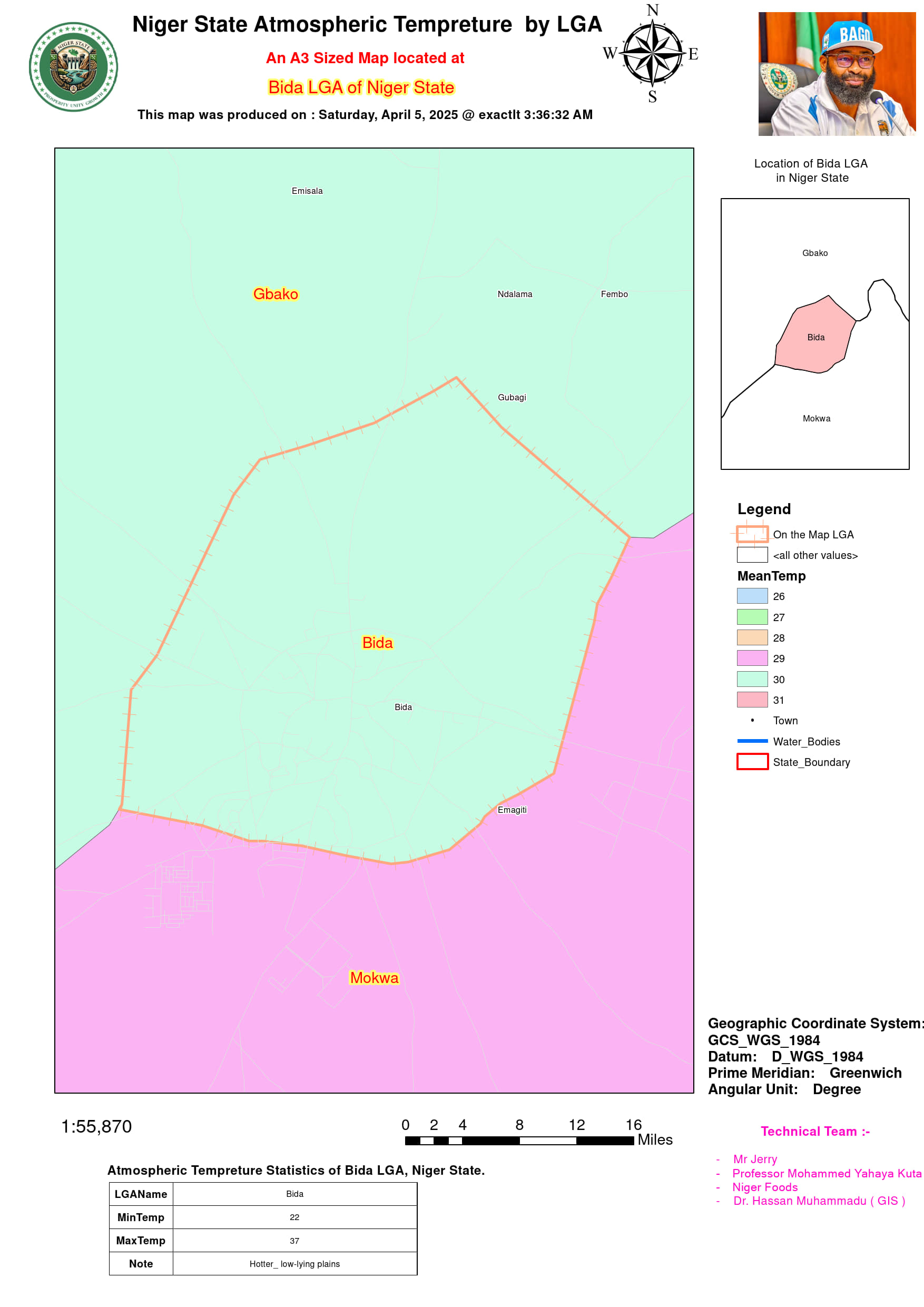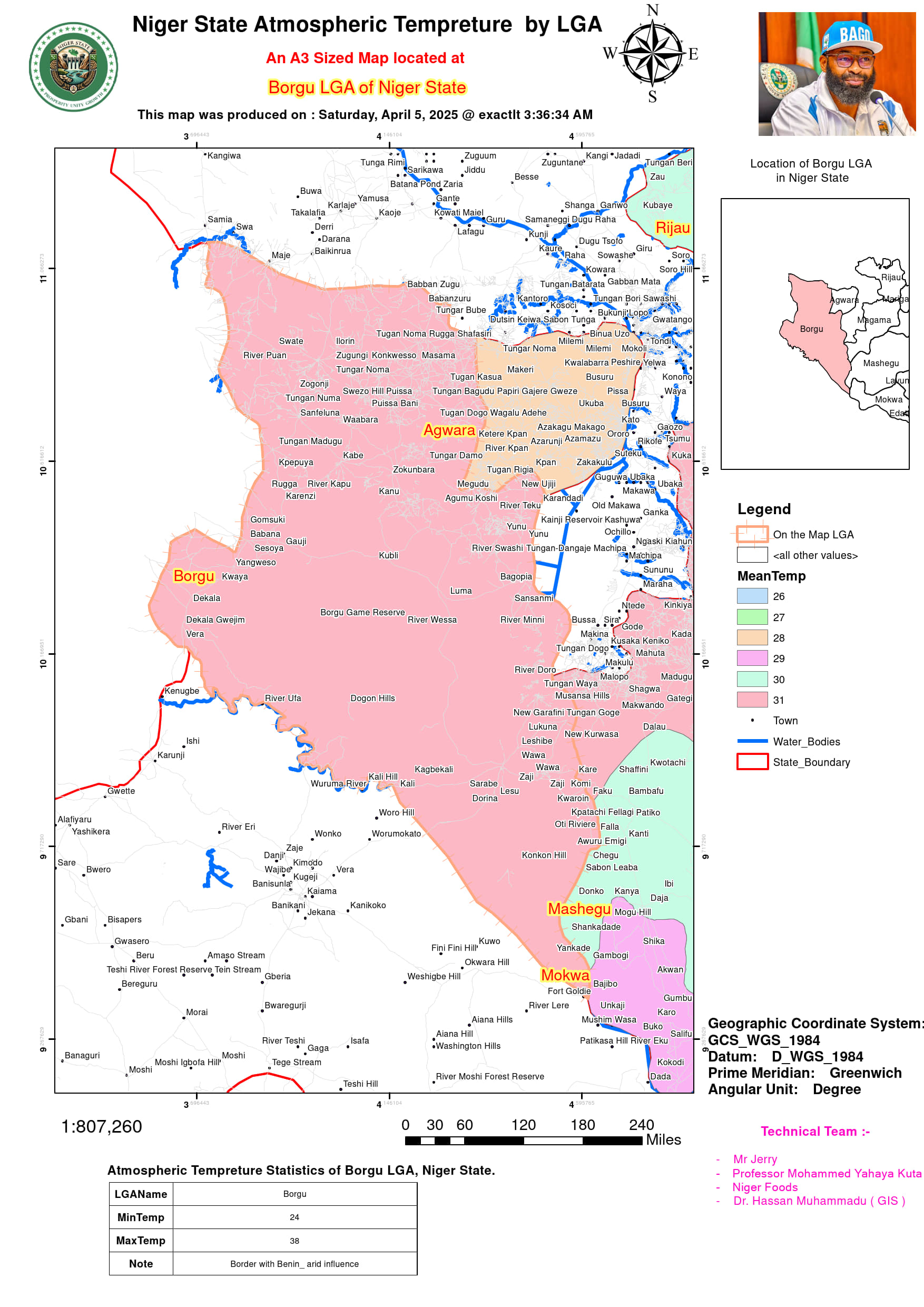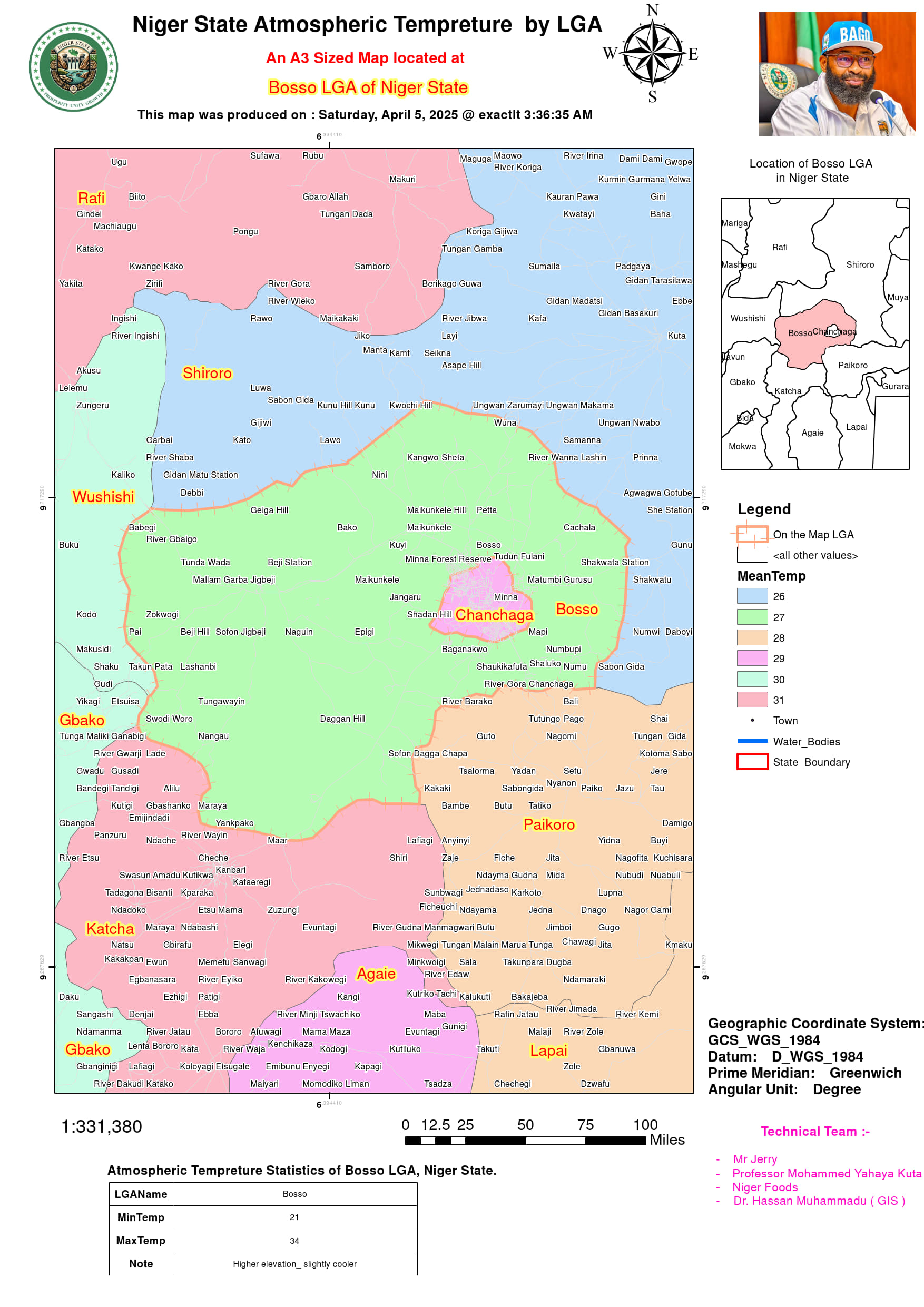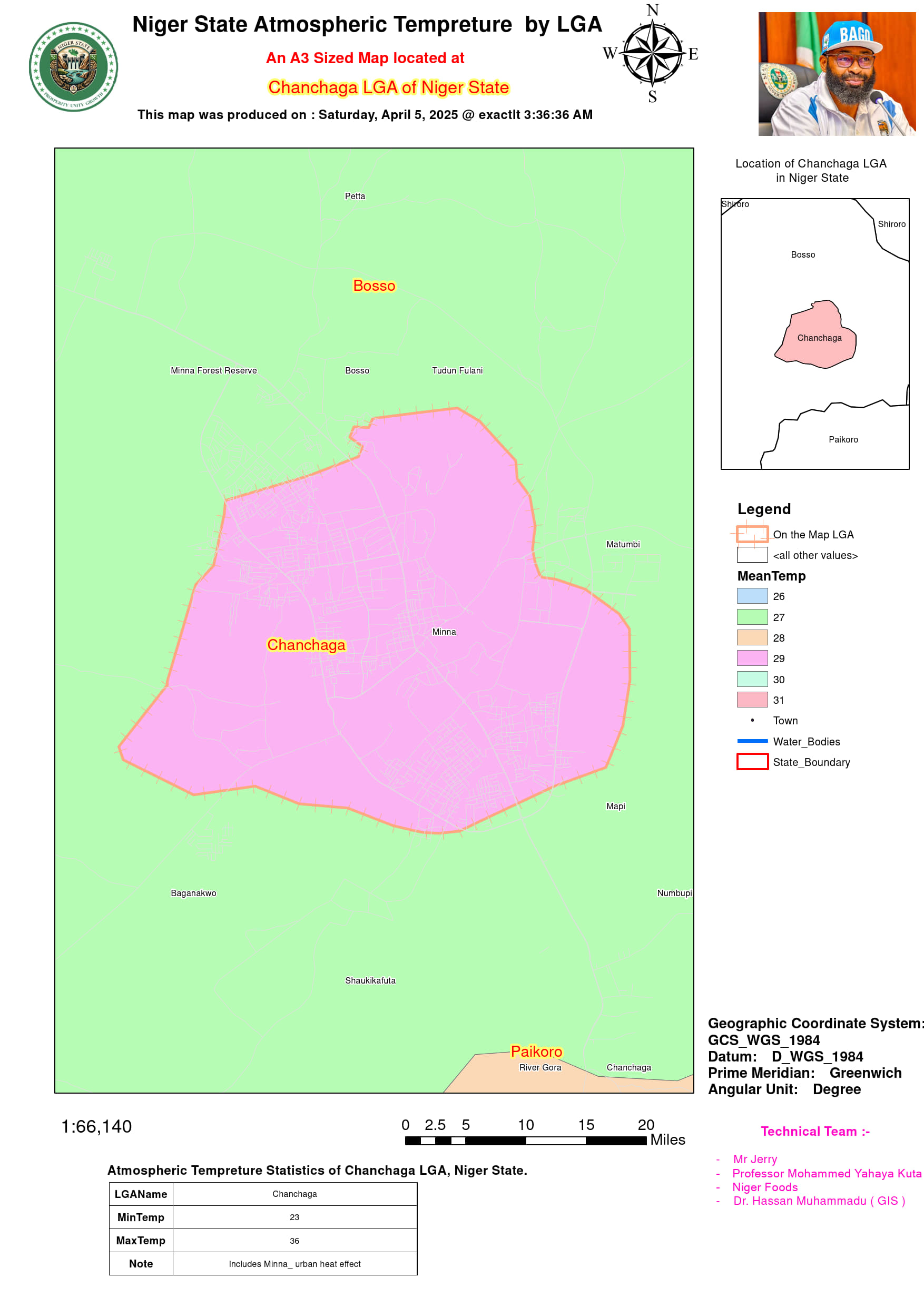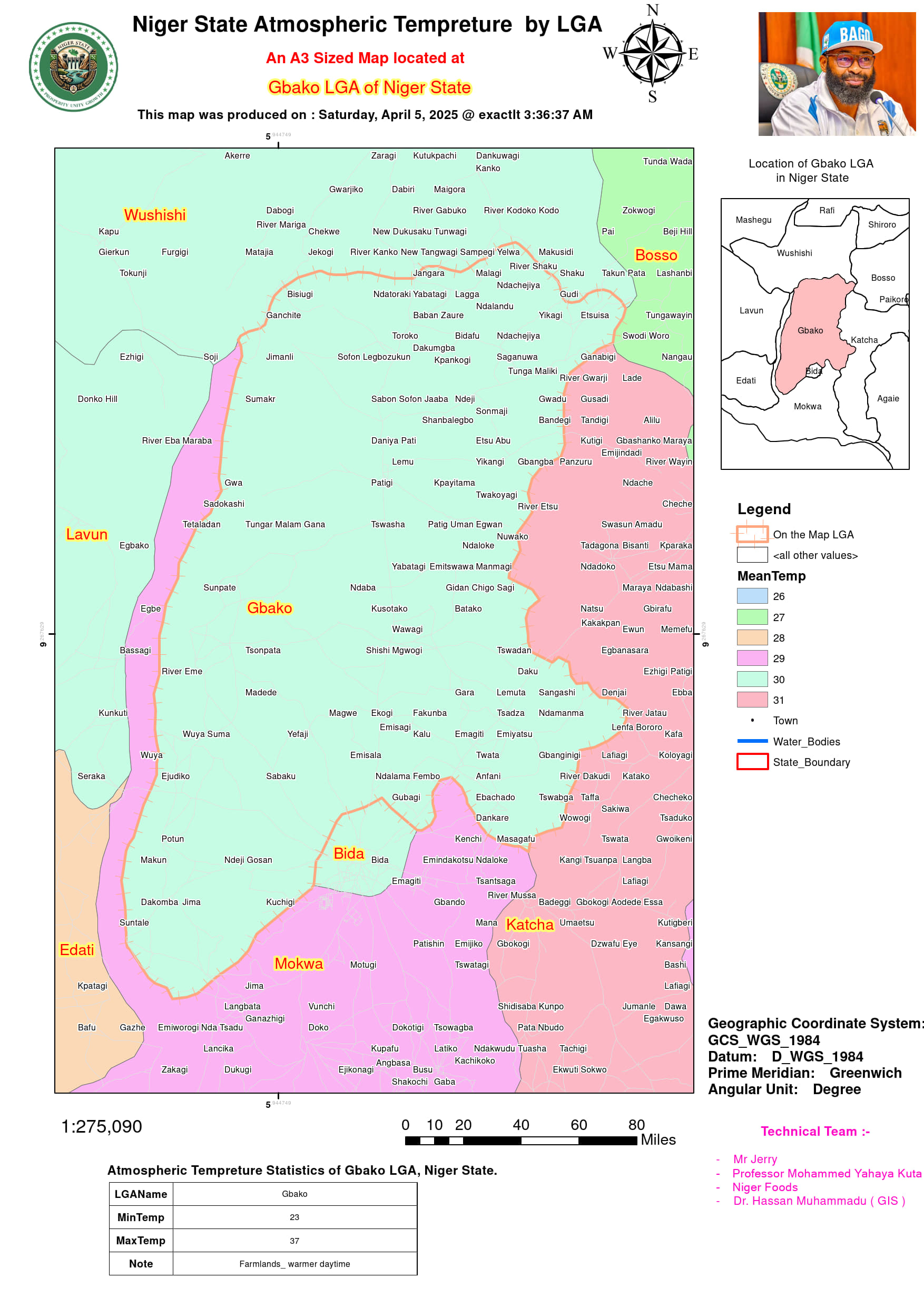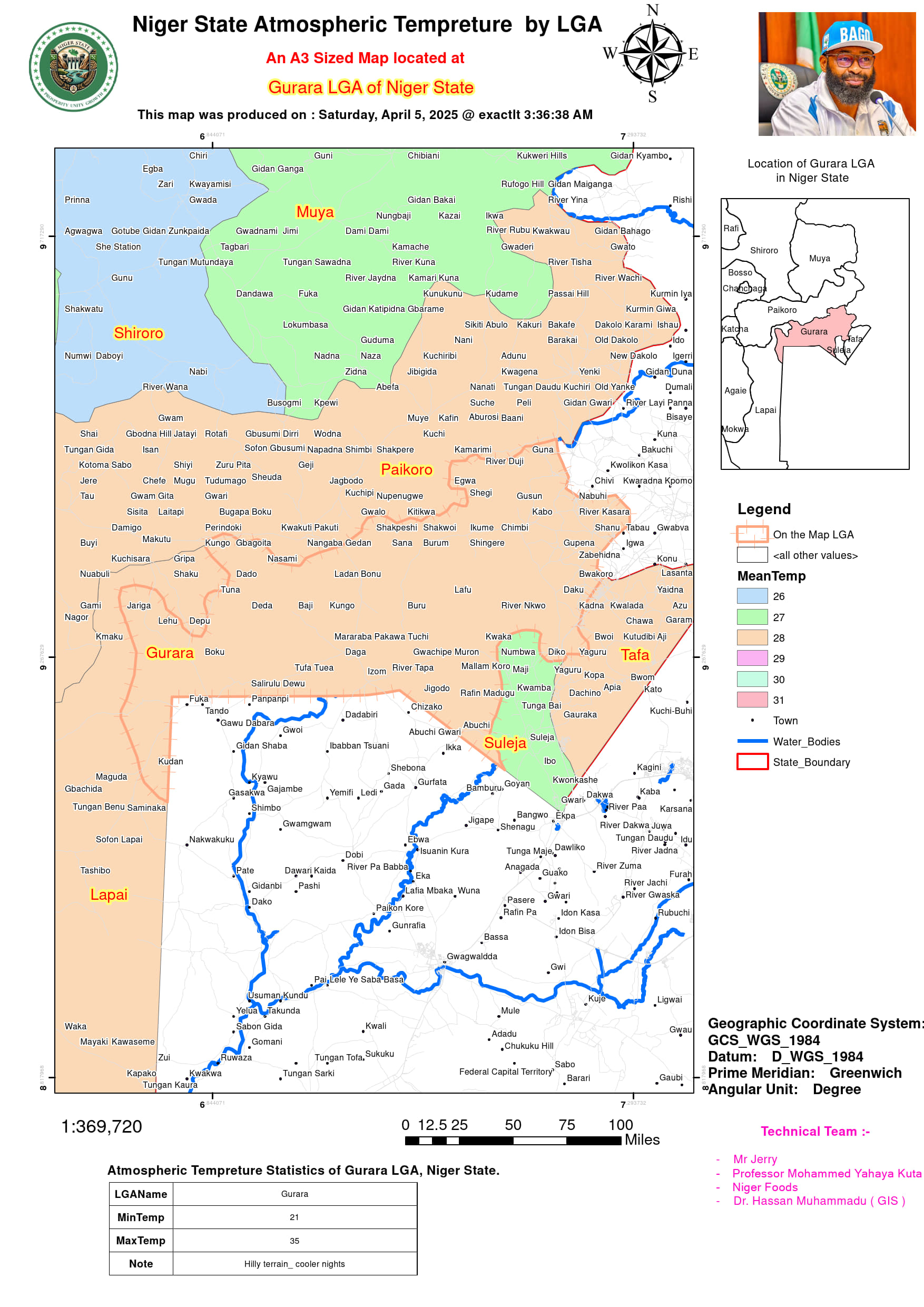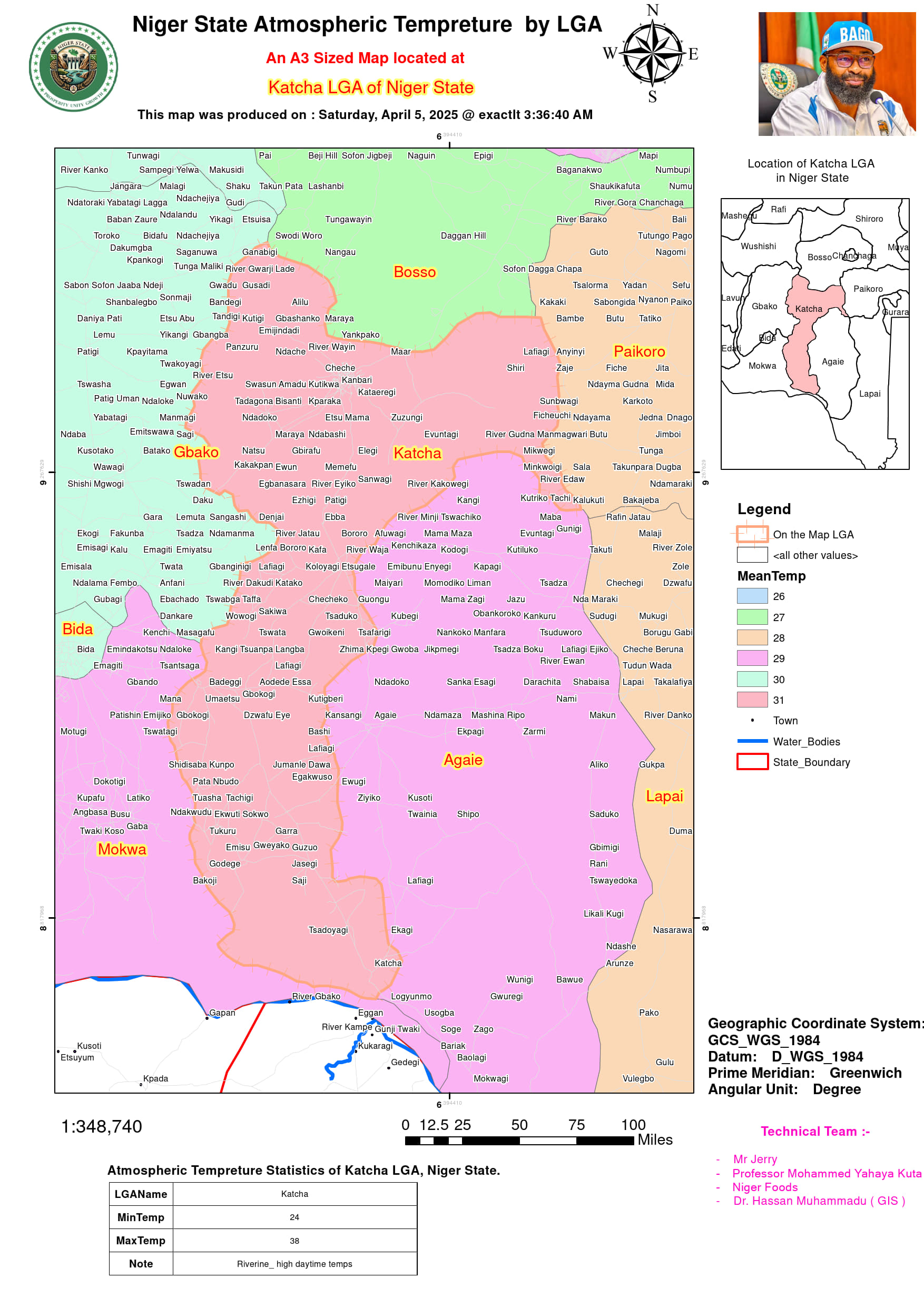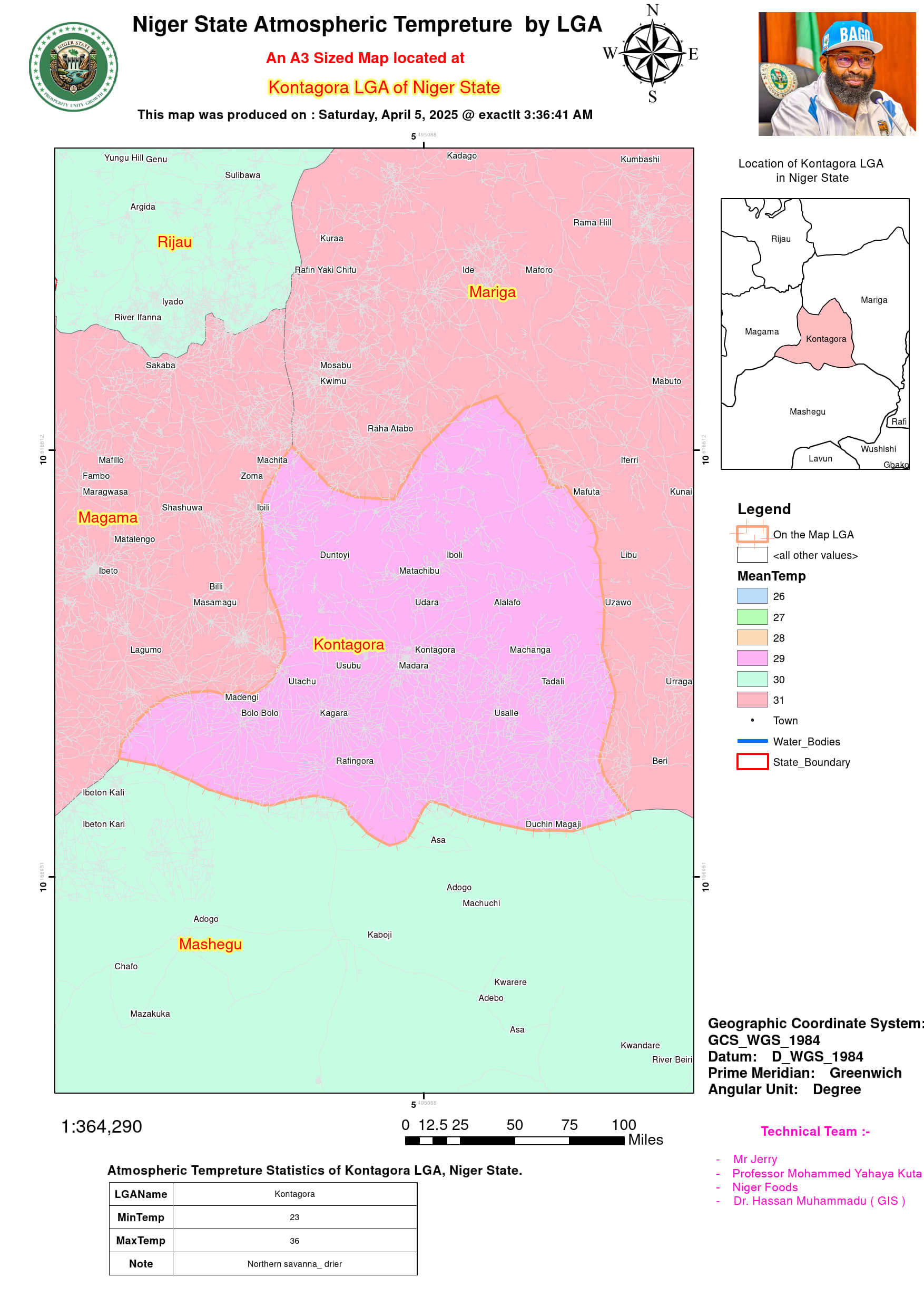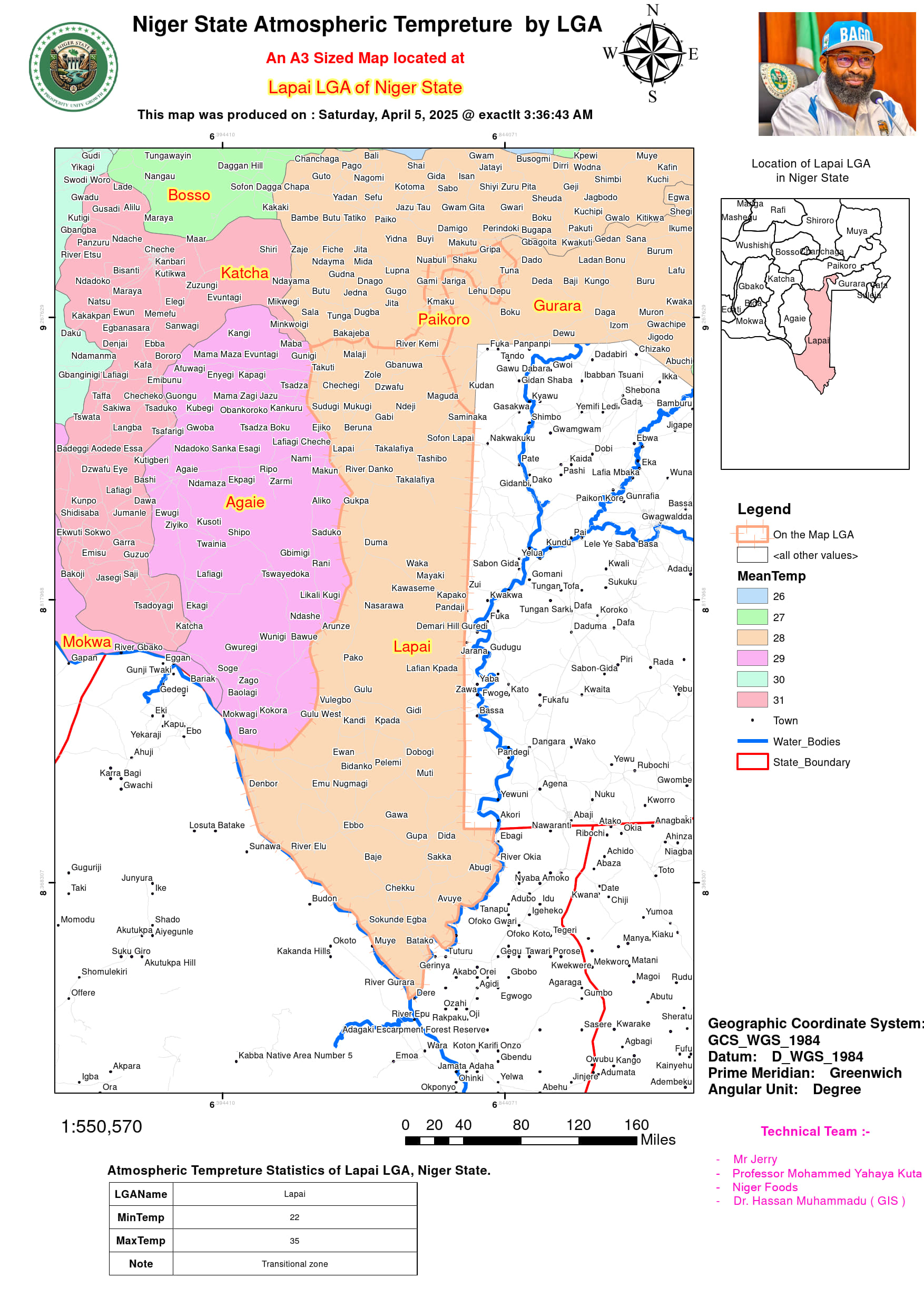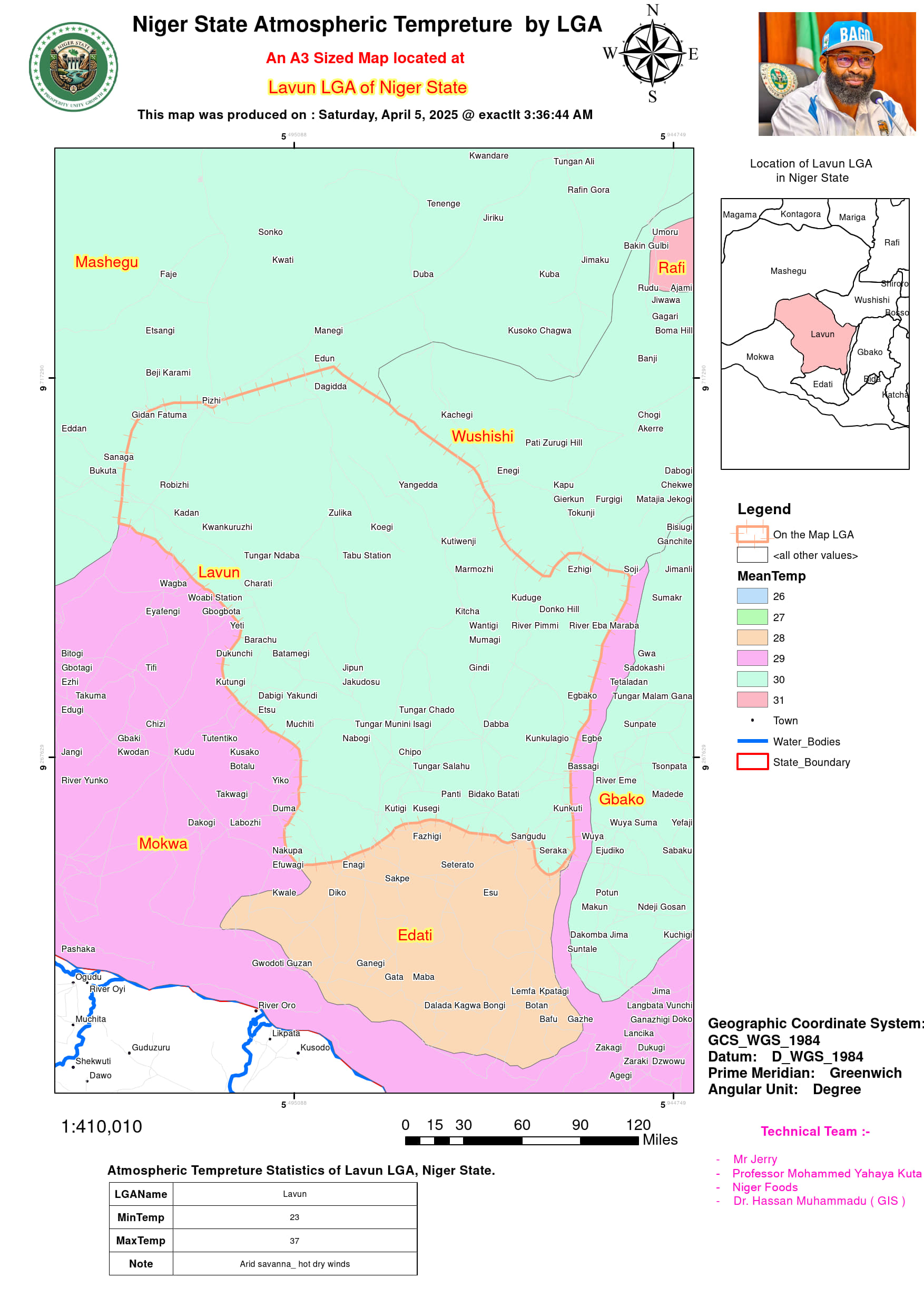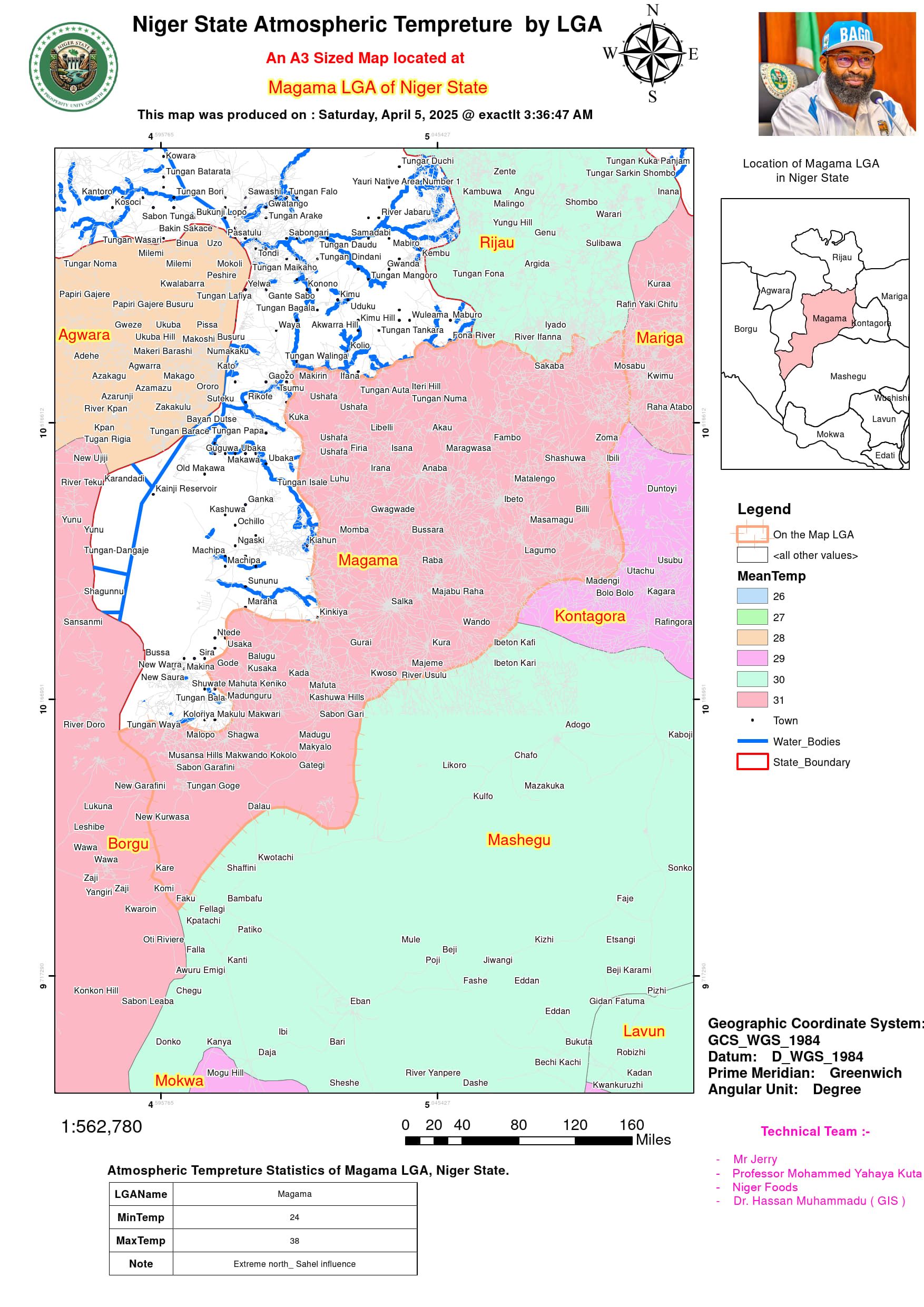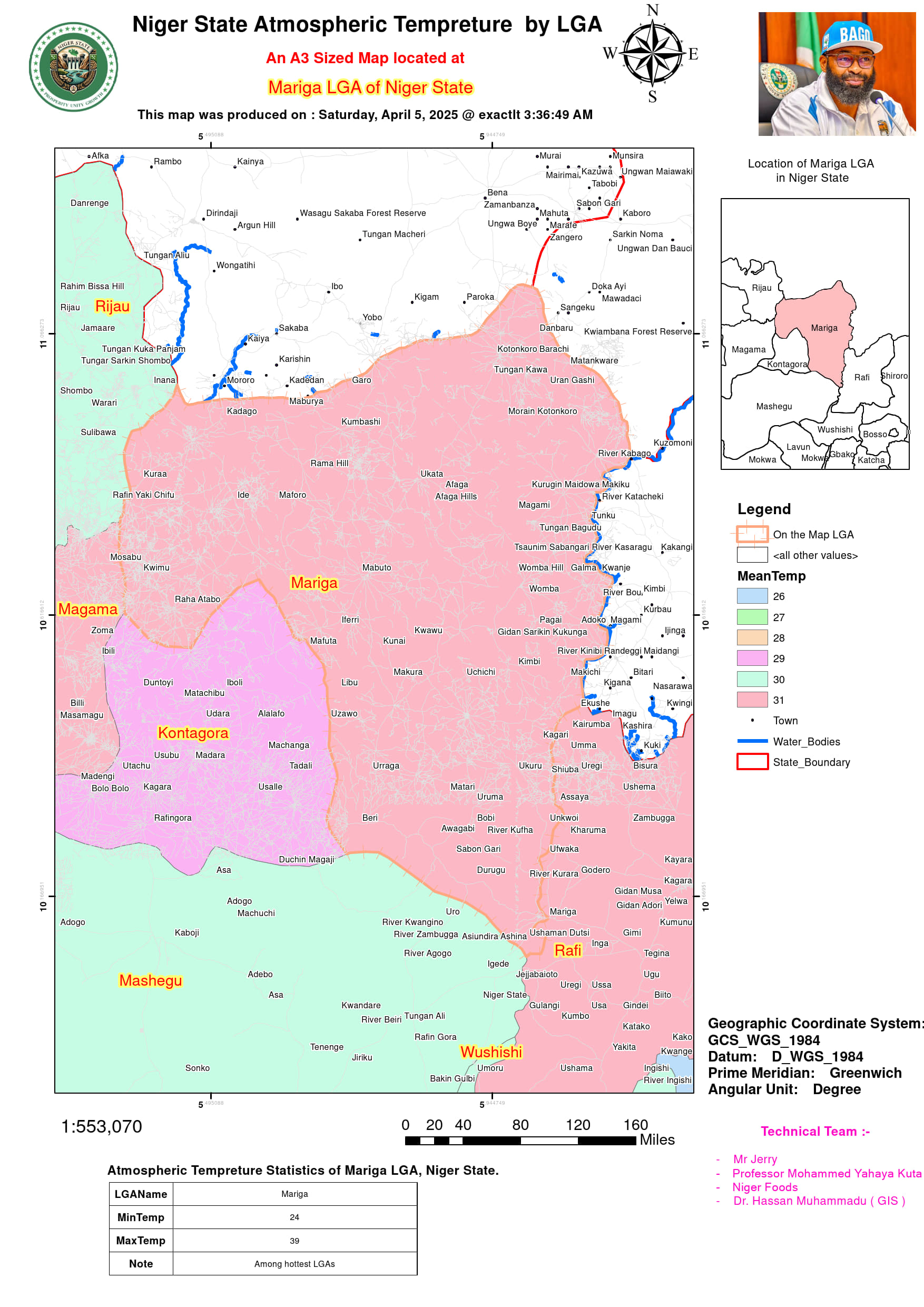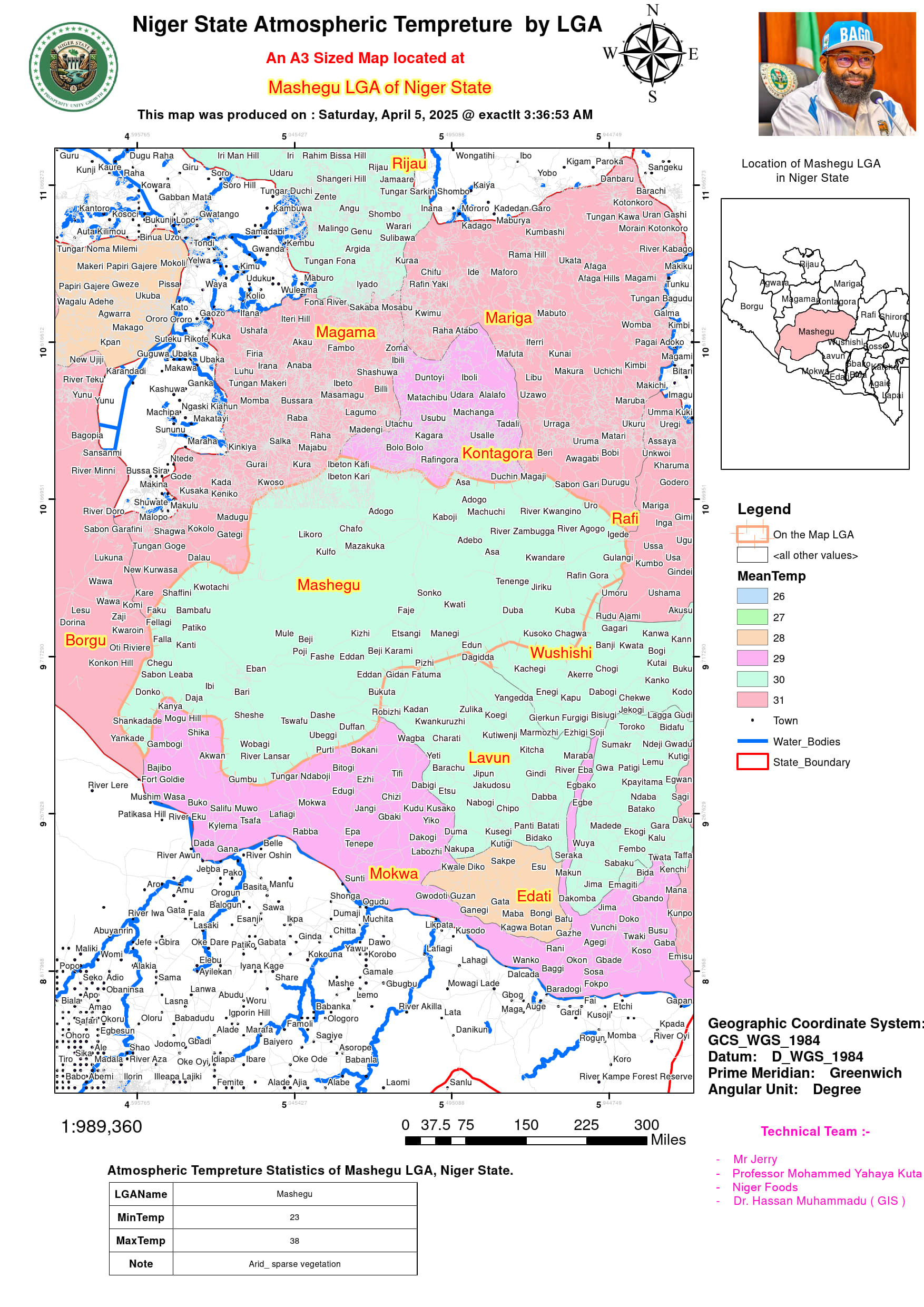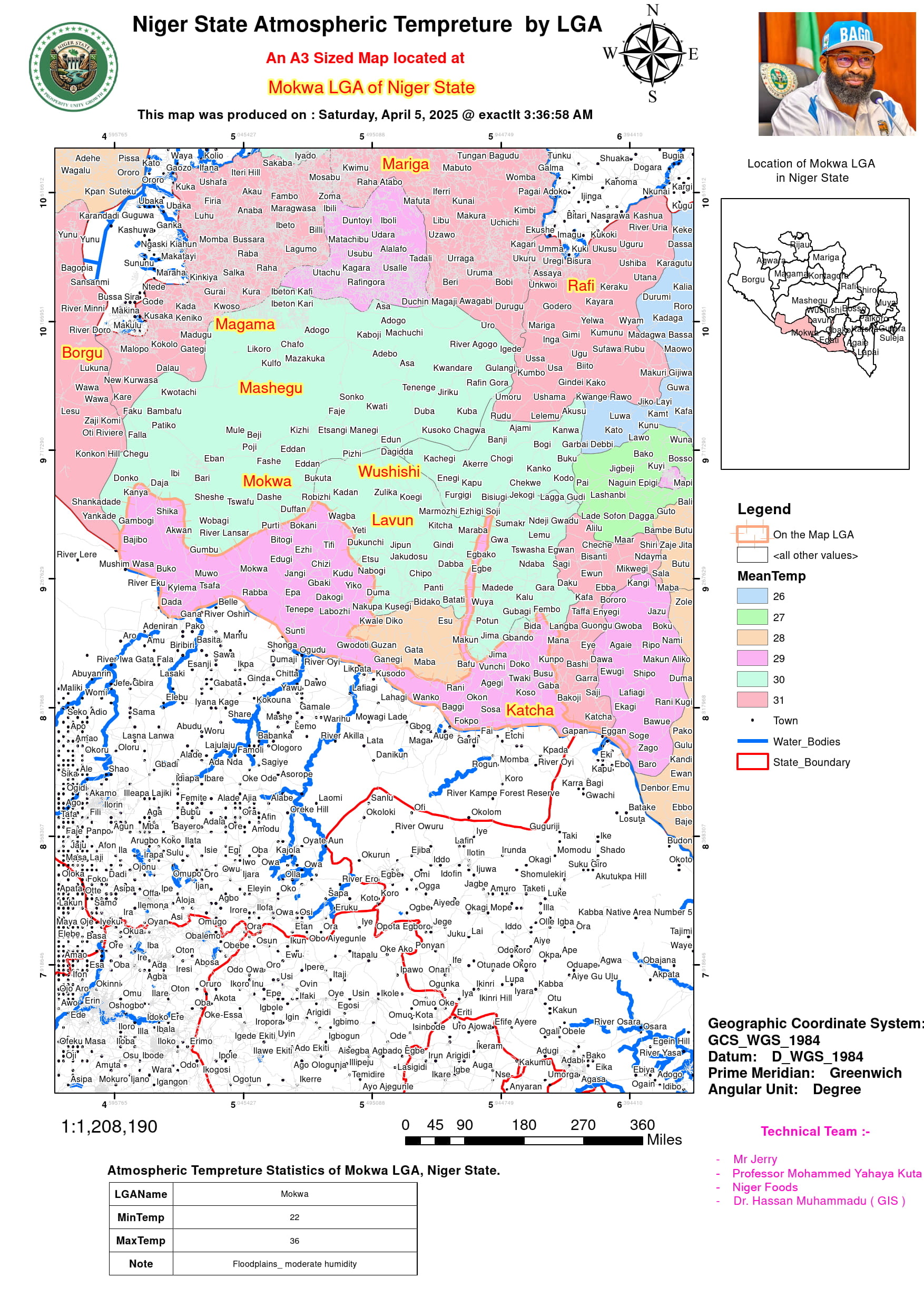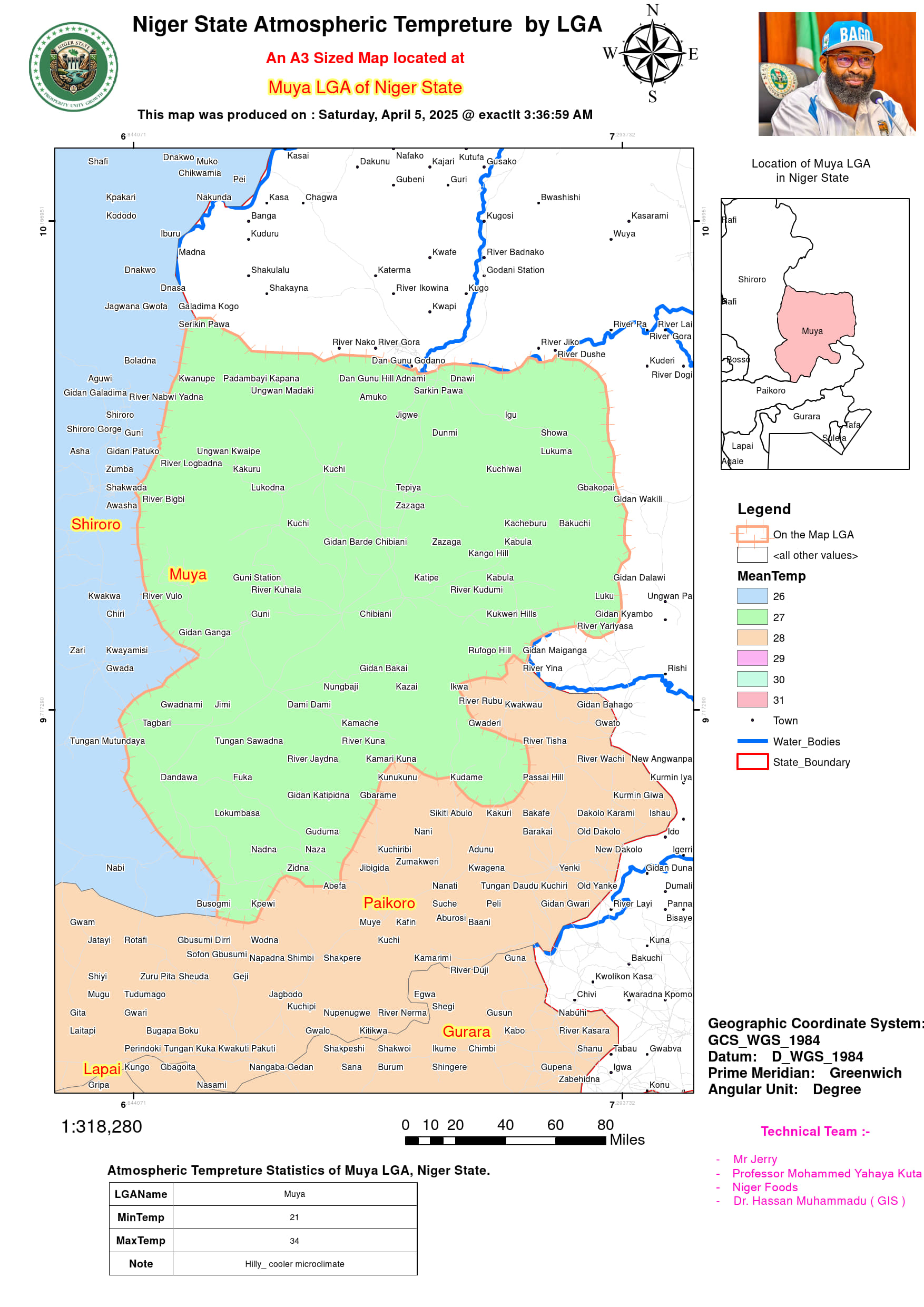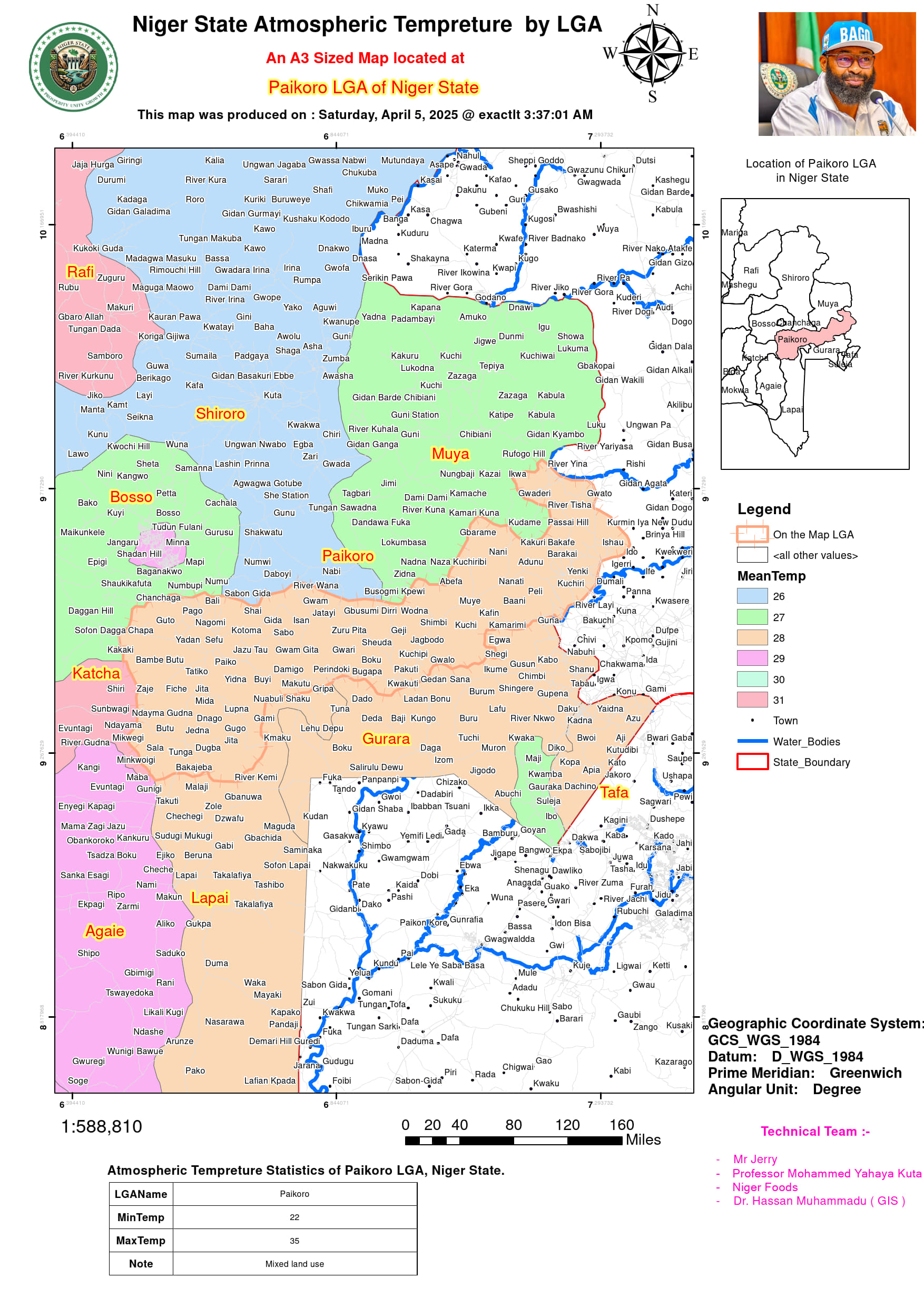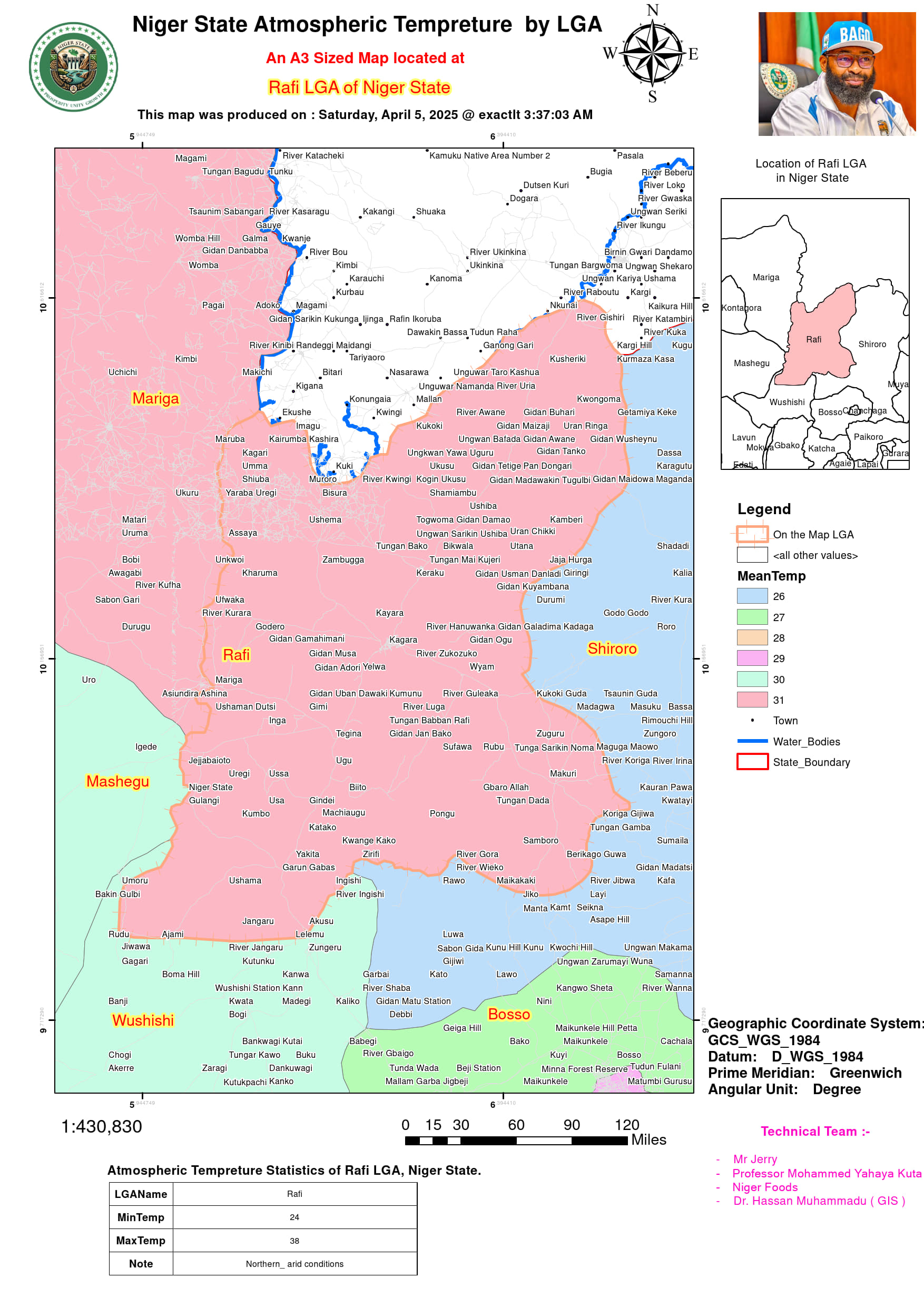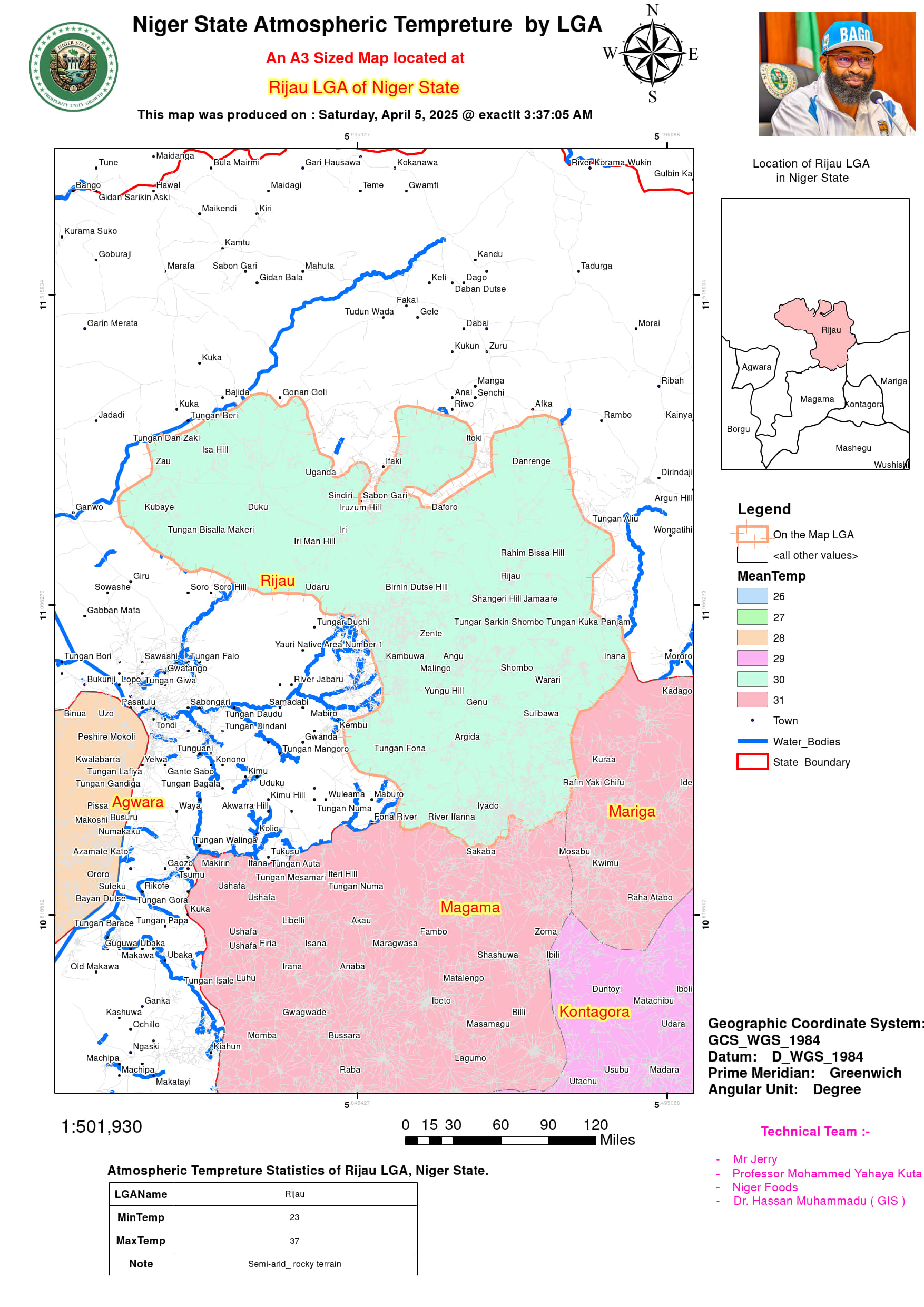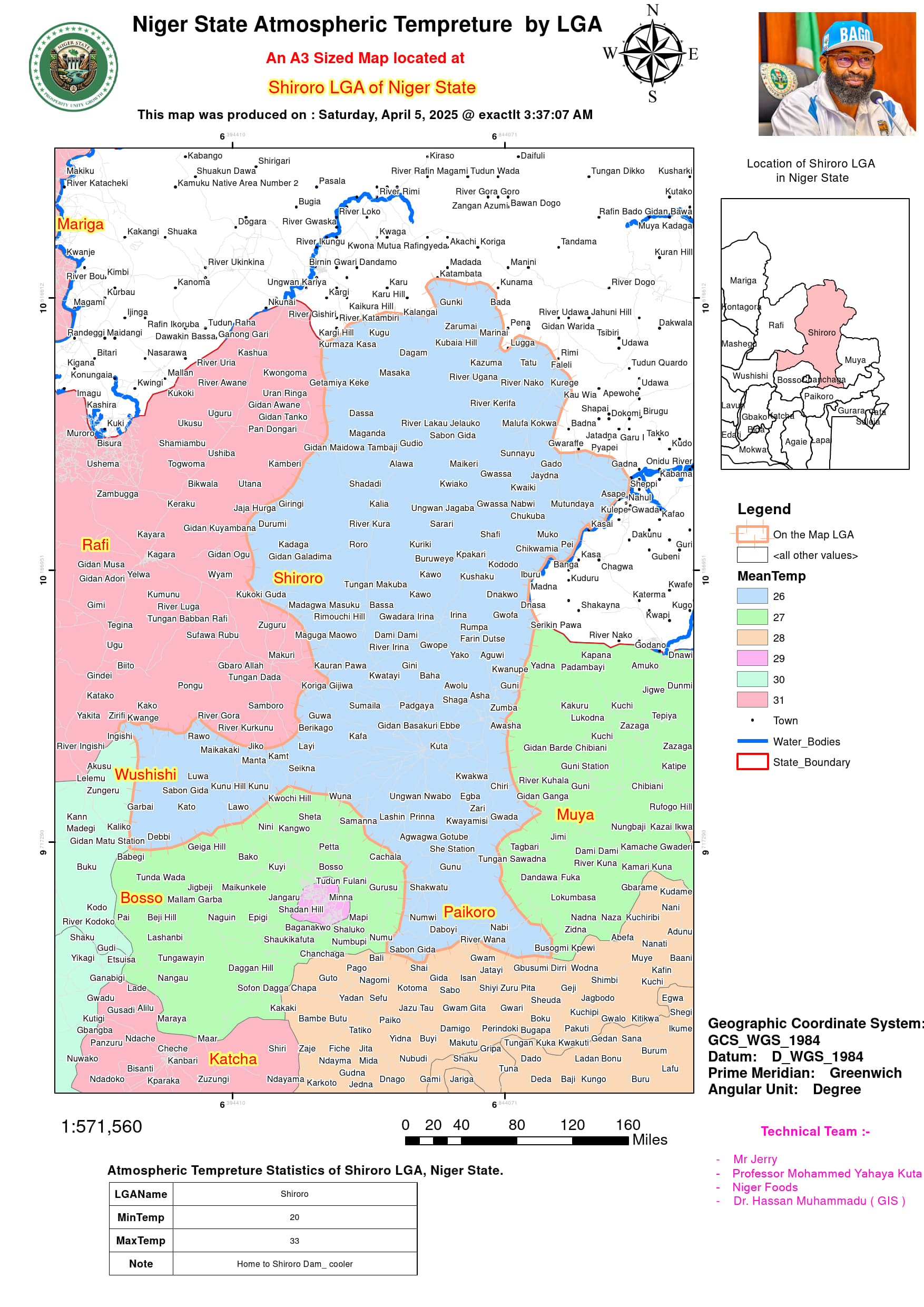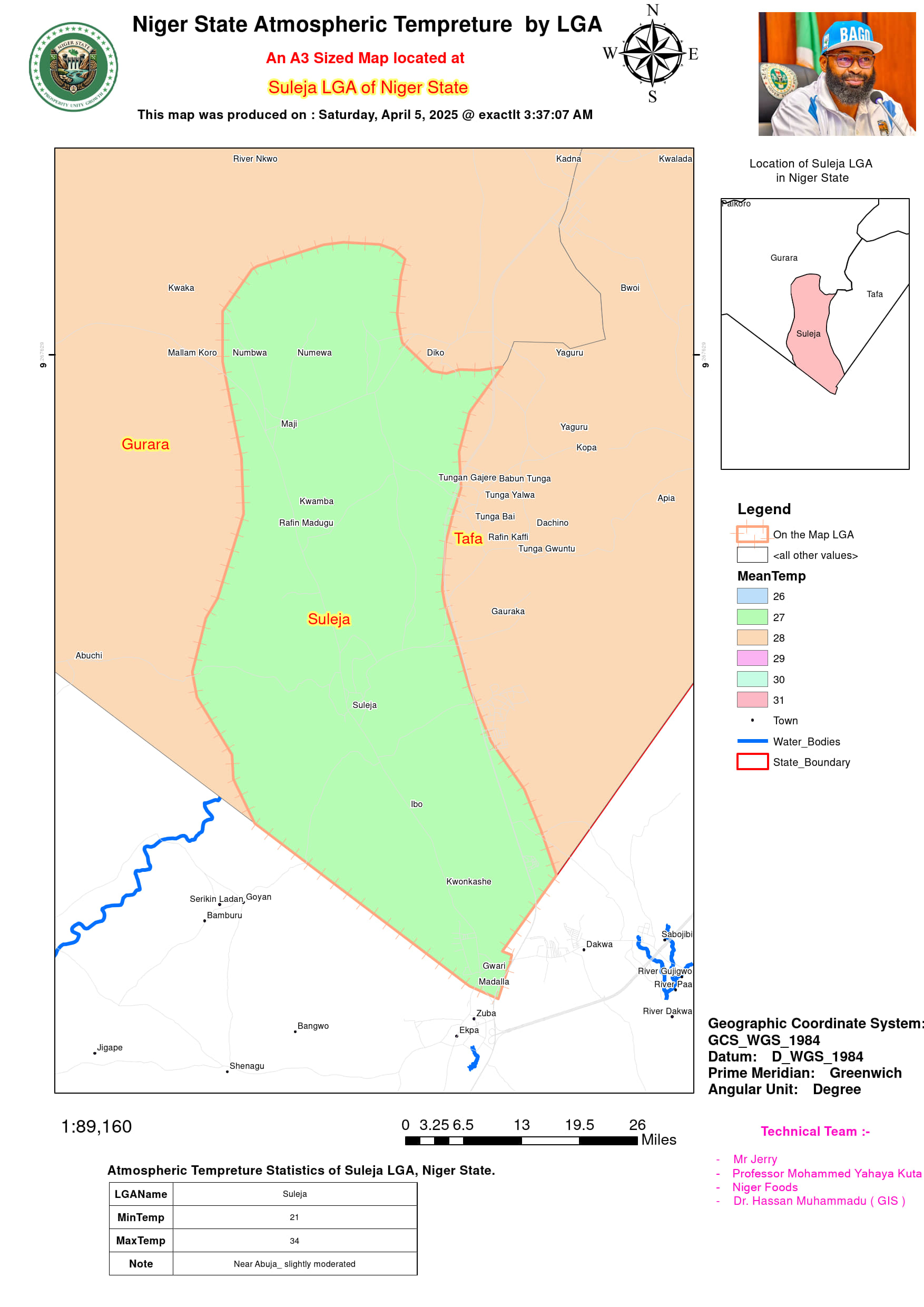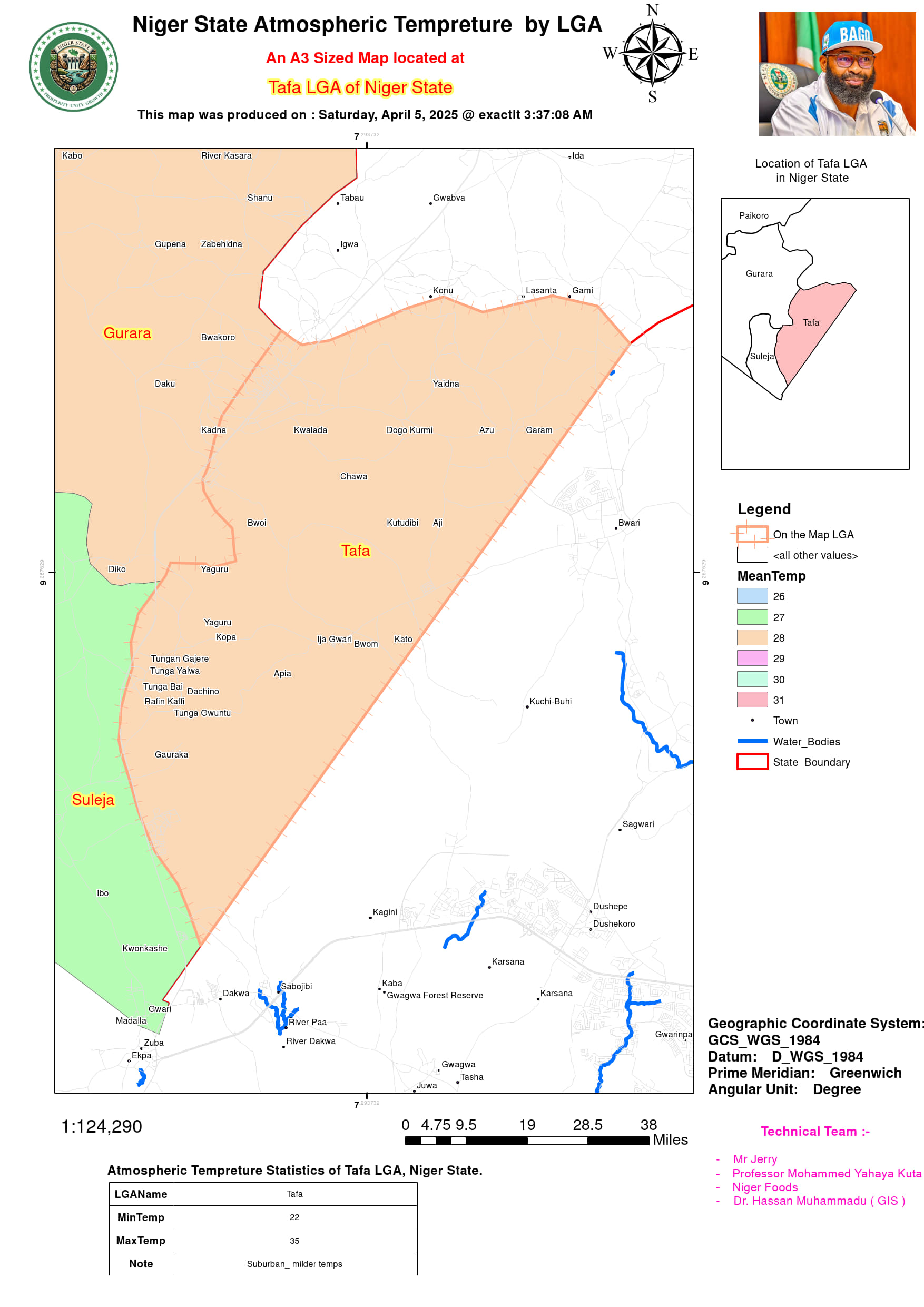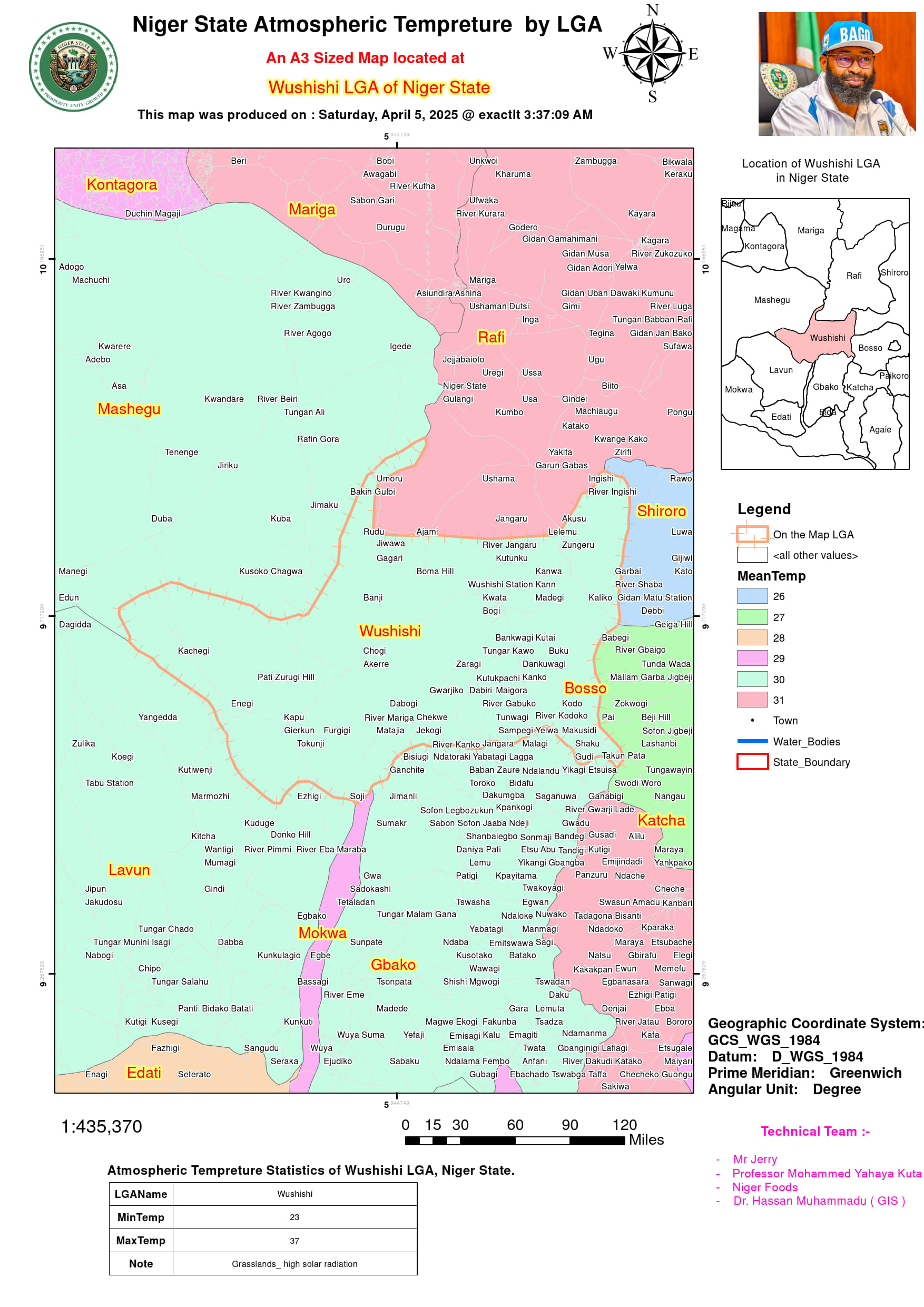Add Your Heading Text HereAtmospheric Temperature Trends
Niger State exhibits distinct thermal gradients that reflect its varied geography, spanning from riverine valleys to arid northern savannas. The data reveals three primary temperature regimes across its Local Government Areas (LGAs). The moderate thermal zone (24°C–38°C; mean 31°C) dominates southern and central LGAs, including Agaie (1870.749 sq km), Bida (53.784 sq km), and Mokwa (4395.315 sq km), where floodplains and inland savannas mitigate extremes. A warmer band (25°C–39°C; mean 32°C) covers transitional areas like Bosso (1516.665 sq km), Lapai (2434.136 sq km), and Shiroro (2074.310 sq km), where elevation slightly tempers daytime highs. The hottest conditions prevail in northern arid zones: LGAs such as Kontagora (706.408 sq km), Magama (1793.745 sq km), and Rijau (773.280 sq km) endure peak temperatures of 27°C–40°C (mean 33.5°C), with Rijau’s 2485.822 sq km area even reaching 28°C–41°C (mean 34.5°C)—the state’s highest recorded range.
Notably, urban and peri-urban LGAs like Chanchaga (65.408 sq km) and Suleja (121.503 sq km) align with the 32°C mean, while riverine Agwara (1534.195 sq km) shares the northern-like 33.5°C mean, likely due to humidity-trapping effects. Thermal asymmetry is evident in large LGAs: Mariga splits between 4401.990 sq km at 33.5°C and 1611.717 sq km at 33°C, while Mashegu transitions from 4724.734 sq km (32°C) to 4910.594 sq km (33°C). The Shiroro Dam region (3355.819 sq km) maintains a 33°C mean, suggesting water bodies exert limited cooling. These patterns underscore how Niger State’s climate shifts from milder southern plains to scorching northern frontiers, with implications for agriculture, water management, and heat stress resilience.
Key thermal takeaways:
Coolest: Southern floodplains (31°C mean)
Hottest: Northern Sahelian fringe (Rijau at 34.5°C mean)
Transitional: Central uplands (32°C mean)
Urban areas: Mirror surrounding rural temps (e.g., Suleja at 32°C)
